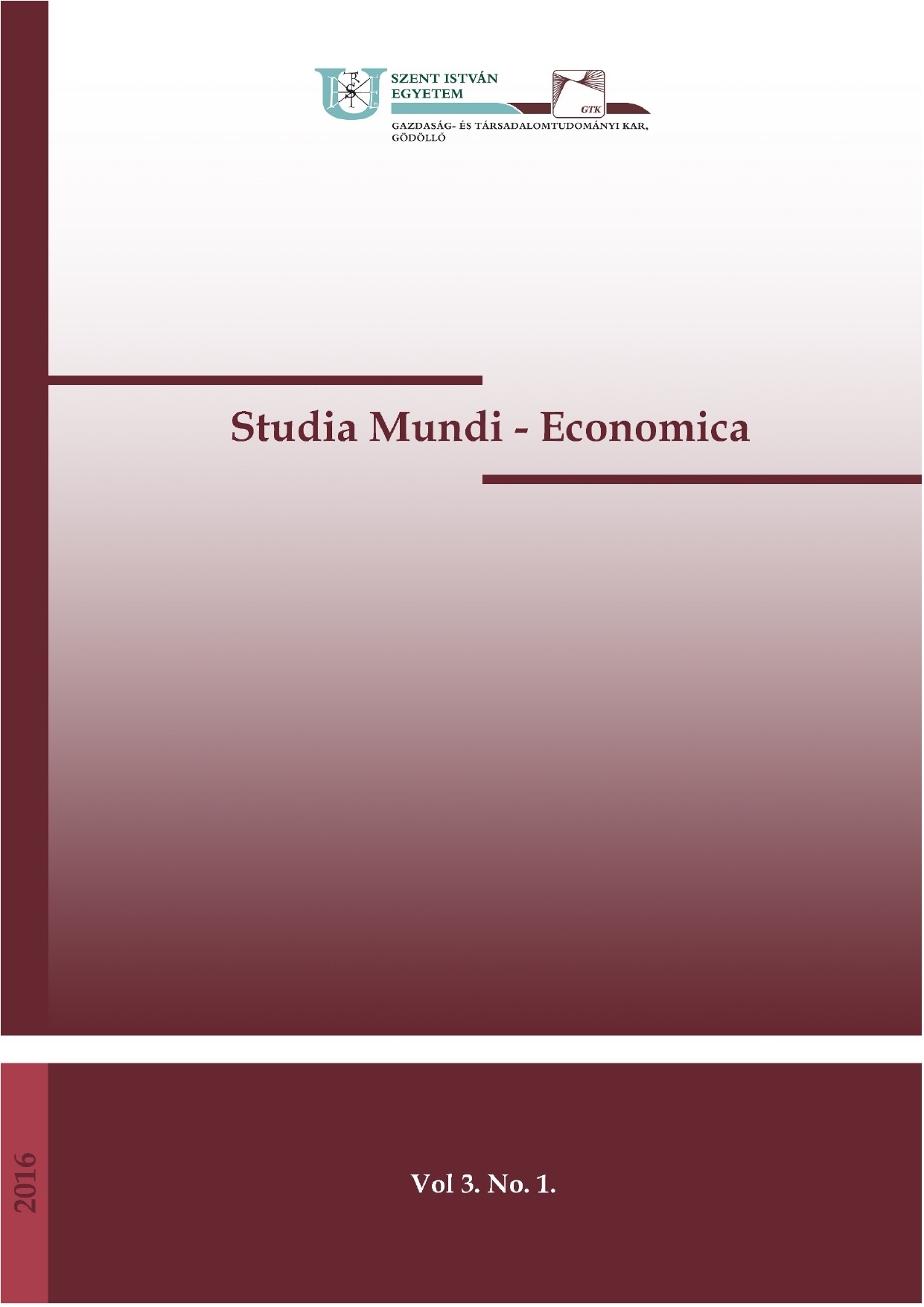Expectations of the working enviroment – encounter civilization on the ocean liner
DOI:
https://doi.org/10.18531/Studia.Mundi.2016.03.01.3-14Kulcsszavak:
cohabitation, working environment, connecting cultures, mental load, motivationAbsztrakt
The world of ocean liners is full of secrets for many people, but, of course, it is a very special working environment by all means. During our examination we have undertaken to map the expectations and motivations of the employees coming from several continents together with some similarities and differences. Based on our results the similarities lying in the background of motivation can enhance cooperation and more intense encounters to a great extent even in spite of the intensive mental and physical burdens.
Hivatkozások
Aronson and Mills (1959) The effect of severity of initiationonlikingfor a group, Journal of Abnormal and Social Psychology, 59, 177-181
Cohen, A. (2007): An examination of the relationship between commitments and culture among five cultural groups of Israeli teachers, Journal of Cross-Cultural Psychology, 38(1), 34-49
Cseh Papp I., Hajós L (2014): Education and working life in Hungary, Acta Technica Corviniensis – Bulletin of Engineering, 2 , pp 105-110
Dunham, R. B.,Grube, J. A.,Castañeda, Maria B. (1994): Organizationalcommitment: The utility of an integrative definition. Journal of Applied Psychology, Vol79(3), Jun 1994, 370-380.
Greenberg, J.,Baron, R. A. (2003): Behaviorin Organizations: Understanding and managing the human side of work (8th ed). Upper Saddle River: Pearson Education, Inc
Forgas, J. (1994): Csoportkohézió és vonatkoztatási csoportok, in: A társas érintkezés pszichológiája, Gondolat
Hogg, M. A., Terry, D. J. (2001): Social identityprocess in organizational contexts. Michigan: Sheridan Books
Hult, C. (2005): Organizationalcommitment and person-environment fit in six western countries, Organization Studies, 26(2), 249-270
Mathieu, J. E.,Zajac, D. M. (1990). A Review and Meta-Analysis of the Antecedents, Correlates, and Consequences of Organizational Commitment. Psychological Bulletin , 108, 171-194. Meyer, J. P., & Allen, N. J. (1991). A threecomponentconceptualization of organizationalcommitment. Human Resource Management Review , 1. (1.), 61-89.
McKinnon, J. L., Harrison, G. L., Chow, C. W., Wu, A. (2003): Organizational culture: Association with commitment, job satisfaction, propensity to remain, and information sharing in Taiwan, International Journal of Business Studies, 11(1), 25- 44. 142
Meyer, J., Stanley, D., Herscovitch, L., és Topolnytsky, L. (2002): Affective, continuance and normative commitment to the organization: A meta-analysis of antecedents, correlates and consequences. Journal of Vocational Behavior, 61. 20– 52
Mowday, R.T., Steers, R.M., Porter, L.W. (1979): The Meauserement of Organizational Commitment, Journal of Vocational Behavior, 14, 223-247
O’Reilly, C. és Chatman, J. (1986): Organizational commitment and psychological attachment. Journal of Applied Psychology, 71. 361–378.
Silverthorne, C. (2004): The impact of organizational culture and personorganization fit on organizational commitment and job satisfaction in Taiwan. Leadership and Organization Development Journal, 25. 7. sz. 592–599
Wasti, S. A. (2003): Organizational commitment, turnover intentions and the influence of cultural values, Journal of Occupational and Organizational Psychology, 76(3), 303-321
Wasti, S. (2005). Commitmentprofiles: Combinations of organizationalcommitmentforms and joboutcomes. Journal of Vocational Behavior, 67, 290-308.
Letöltések
Megjelent
Folyóirat szám
Rovat
License
Copyright (c) 2016 Andrea Balogh, Andrea Juhászné Klér, Ildikó Rudnák

This work is licensed under a Creative Commons Attribution-NonCommercial-NoDerivatives 4.0 International License.
A folyóirat Open Access (Gold). Cikkeire a Creative Commons 4.0 standard licenc alábbi típusa vonatkozik: CC-BY-NC-ND-4.0. Ennek értelmében a mű szabadon másolható, terjeszthető, bemutatható és előadható, azonban nem használható fel kereskedelmi célokra (NC), továbbá nem módosítható és nem készíthető belőle átdolgozás, származékos mű (ND). A licenc alapján a szerző vagy a jogosult által meghatározott módon fel kell tüntetni a szerző nevét és a szerzői mű címét (BY).






